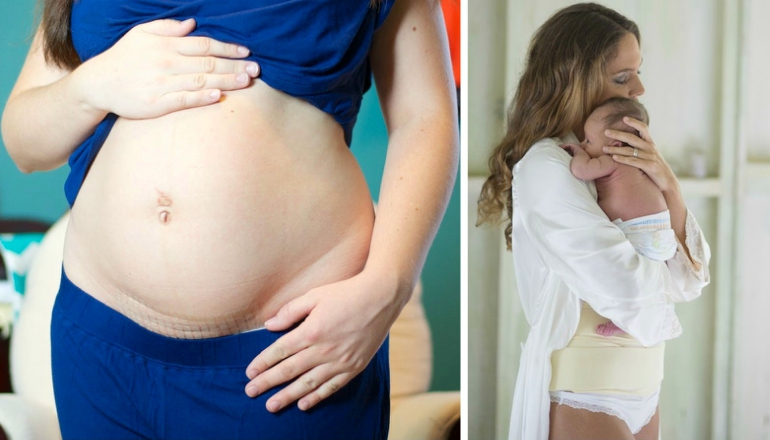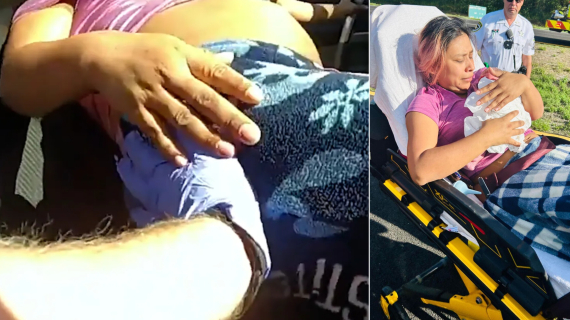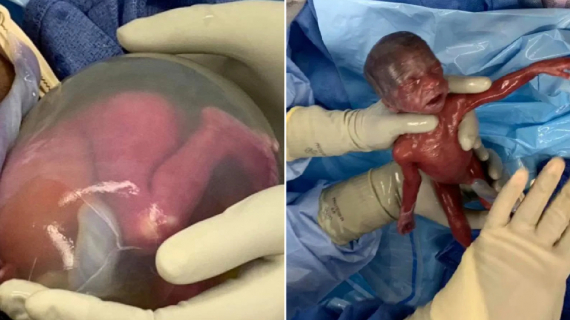Care And Recovery After A Cesarean Section

Wait the right amount of time to move around: You won’t be pacing the room rocking your newborn right after delivery, but you should be able to get out of bed and walk around within a day. Why the wait? First, the numbing medications have to wear off (our guess is you actually want to be able to feel your legs). And some women, especially those who had a long labor before they had a c-section (if that’s you, we’re so sorry), need extra time to regain their energy, says Sarah Wagner, MD, FACOG, of the Loyola University Health System in Maywood, Illinois. Once the catheter is removed (it emptied your bladder so it wouldn’t be damaged during delivery), you’ll be able to get out of bed. And you should (at least a little bit); moving around will help you recover.
“Being active allows normal body functions to get back to their routine, as well as decreasing the chance of a postoperative complication,” says Dr. Wagner. “For example, being sedentary can cause the bowels to move more slowly, leading to constipation. It can also be a serious risk factor for forming a blood clot in the leg or acquiring a postoperative pneumonia.”
Of course, you’re not going to get up and go for a sprint anytime soon—it’s important to take the time to let your body heal before you jump back into exercise—but Dr. Wagner recommends gradually increasing the amount of activity you do around two weeks postpartum. “That can mean walking longer distances and becoming more active,” she says. “Increase the intensity around six weeks postpartum.” By that time, you should have a follow-up appointment with your OB, who will likely clear you for more intense exercise (and sex too, not that you’ll be interested!).
Get help lifting baby: We know all you want to do is lift that adorable baby out of the bassinet, but you’re going to have to ask for help. It could be painful or difficult shortly after surgery. This is normal, and pain medication, as well as a hand from dad, will help. “Lifting a baby out of the bassinet may be a challenge, but sitting and holding a baby in a chair and nursing isn’t,” says Samantha Feder, MD, director of Ambulatory Obstetrics and Gynecology at St. Luke’s-Roosevelt Hospital Center in New York City. So go ahead and breastfeed your baby, but ask for assistance from the nurses or your partner.
Just say yes to the pain meds: Expect the c-section incision to hurt for a while. Medications delivered through the epidural ease pain immediately after delivery. After you’re done with those, you’ll be given oral anti-inflammatory medication. These meds don’t interfere with breastfeeding, so take them, says Dr. Wagner. “Don’t be stoic,” she says. “If you can keep pain at bay, it’s unlikely to get out of control. But if you let it go, it’ll hit you like a ton of bricks.”
Every new mom gets cramping after delivery—that’s the uterus’s way of shrinking to its original size, and it will probably clear up within two weeks post-birth—and having that incision will make it more intense for you. Also know that breastfeeding can trigger those cramps and make the pain even worse. That’s all the more reason to keep taking your meds. Talk to your doctor or a lactation consultant if you’re having severe pain or other problems breastfeeding.
Expect bleeding: Even though you didn’t deliver vaginally, you will have postpartum vaginal bleeding. The blood comes from the area of the uterus that used to be attached to the placenta. “The bleeding is part of the healing process in your uterus,” says Dr. Wagner. So if you’re not bleeding, tell your doctor.
Eat lots of fiber: Constipation is a big issue for women after c-sections. “Anytime you enter the abdomen (surgically), the bowels can take a bit of time to get back to normal,” says Dr. Wagner. Gas also gets backed up. This can be uncomfortable in the obvious ways but in surprising ones as well, like shoulder pain. “If your bowels are distended, they can irritate the diaphragm, and that can be a referred pain that goes to the shoulders,” says Dr. Wagner.
So take those stool softeners and anti-gas meds, eat fiber-rich foods like fruits and vegetables, drink lots of water and prune juice, and move around as much as possible. And don’t be shy—let that gas pass.
Care for your incision: In the shower, let soapy water drip on the wound (don’t scrub). Pat it dry. If your skin folds over the incision, put a cloth pad on it to keep it from getting sweaty. Within a week, your wound will be mostly healed, says Dr. Wagner. But look out for issues: If you develop a fever or if the skin surrounding the incision turns red, it starts oozing green or pus-colored liquid, or it becomes hard or painful, call your doctor. These could be signs of infection.
And don’t worry just yet about scarring—yes, you’ll have one and there’s no way of knowing exactly how it will look once it heals. “Any incision is going to leave a scar,” says Dr. Feder. “How much of a scar is determined by your own genetics.” Once your wound has healed, about six weeks after delivery, you can use scar-reducing ointments to help with the appearance. The color will likely fade, but it will be there. For most c-section mamas, the scar is horizontal and falls under the bathing suit line, so you’ll probably be able to wear a two-piece someday (yay!).
Take good care of yourself: Sure, you’re a new mom with a round-the-clock new responsibility, but it’s important for both you and baby that you recover quickly. Help speed recovery by eating nutritious foods, getting as much rest as you can and exercising once you get the go-ahead from your doctor. Don’t be afraid to ask for a little help so you can get some extra sleep, take a long shower or eat a full meal.














